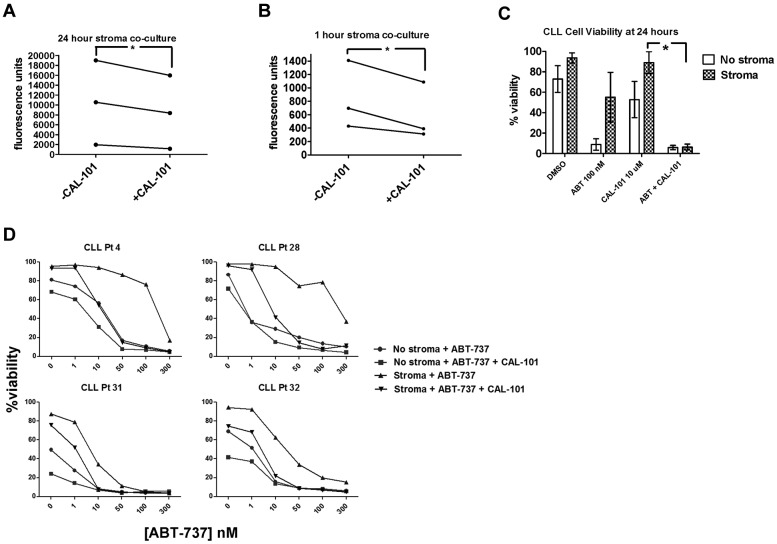Figure 5.
CAL-101 releases CLL cells sequestered in stroma to overcome stroma-mediated resistance. PB-derived CLL cells were labeled with Calcein-AM and cocultured on StromaNKTert for 24 hours ± 10μM CAL-101, rinsed by gentle pipetting, and quantified by whole-well fluorometry. The number of adherent cells is proportional to the fluorescence units on the y-axis. Significantly more CLL cells were adherent at 24 hours (A) than at 1 hour (B), and significantly decreased CLL cell adherence was observed in the presence of 10μM CAL-101 at both 24 hours (A) and at 1 hour (B; 1-tailed P = .045 and 0.032, respectively). (C) PB-derived CLL cells were cocultured in the presence or absence of StromaNKTert for 24 hours with drug treatments as depicted in the graph, and viability assessed by annexin V/propidium iodide. The mean percent viability for 6 patients is depicted along with SEM. Patients demonstrated stroma-mediated resistance to either 100nM ABT-737 or 10μM CAL-101 alone, but this resistance was overcome by the combination of the 2 drugs in all patients. (D) Dose-response curves for CLL cells from 4 individual patients cultured in the presence of ABT-737 for 24 hours ± StromaNKTert and ± CAL-101. ABT-737 alone or in combination with CAL-101 showed dose-dependent killing in the absence of stroma. Resistance to ABT-737 alone and CAL-101 alone was observed in the presence of StromaNKTert, but this could be overcome by adding CAL-101 at 10μM to concentrations of ABT-737 as low as 10nM.

